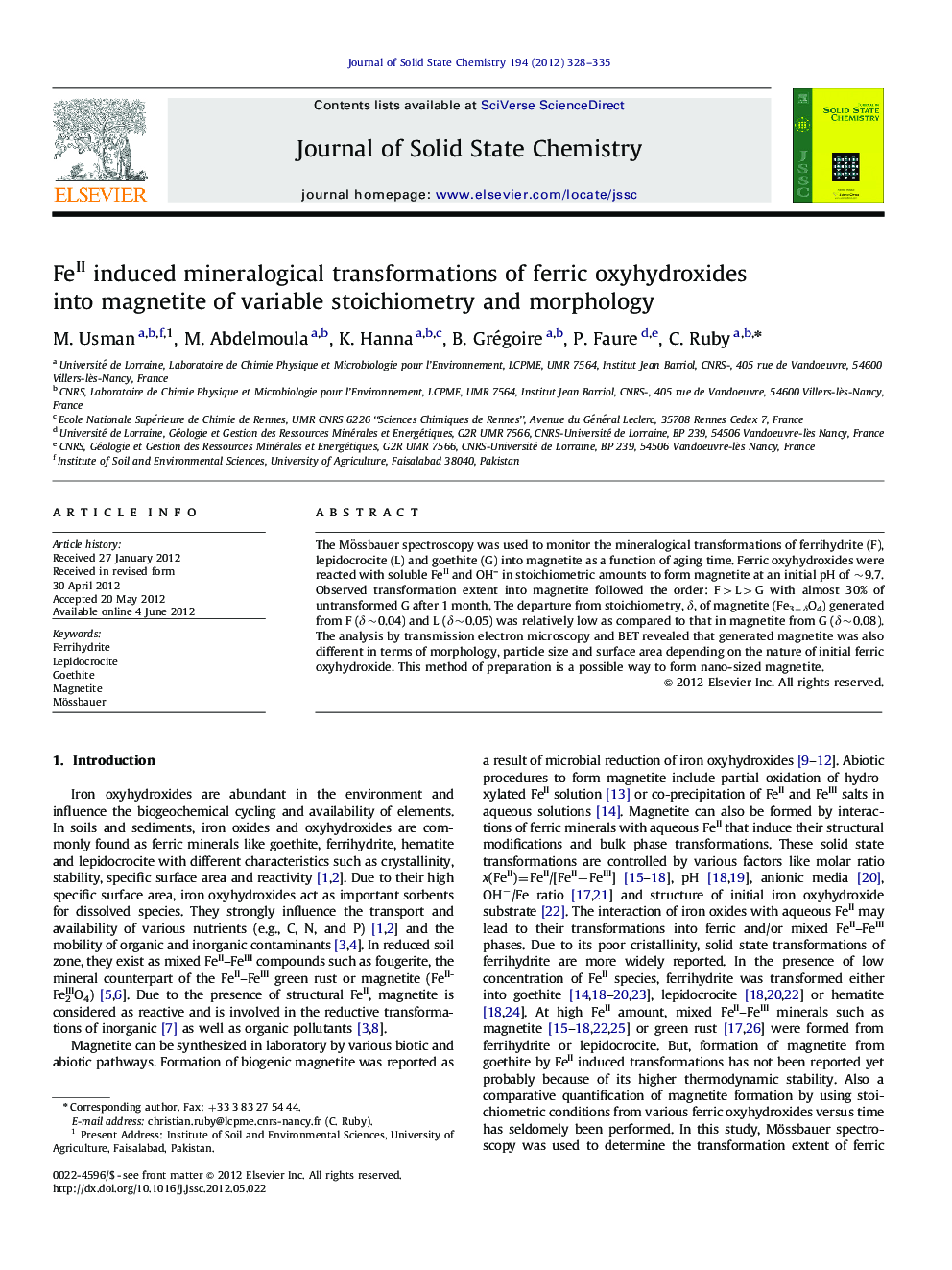| Article ID | Journal | Published Year | Pages | File Type |
|---|---|---|---|---|
| 1330286 | Journal of Solid State Chemistry | 2012 | 8 Pages |
The Mössbauer spectroscopy was used to monitor the mineralogical transformations of ferrihydrite (F), lepidocrocite (L) and goethite (G) into magnetite as a function of aging time. Ferric oxyhydroxides were reacted with soluble FeII and OH– in stoichiometric amounts to form magnetite at an initial pH of ∼9.7. Observed transformation extent into magnetite followed the order: F>L>G with almost 30% of untransformed G after 1 month. The departure from stoichiometry, δ, of magnetite (Fe3−δO4) generated from F (δ∼0.04) and L (δ∼0.05) was relatively low as compared to that in magnetite from G (δ∼0.08). The analysis by transmission electron microscopy and BET revealed that generated magnetite was also different in terms of morphology, particle size and surface area depending on the nature of initial ferric oxyhydroxide. This method of preparation is a possible way to form nano-sized magnetite.
Graphical abstractMössbauer spectrum of the early stage of magnetite formation formed from the interaction of adsorbed FeII species with goethite.Figure optionsDownload full-size imageDownload as PowerPoint slideHighlights► Ferric oxides were reacted with hydroxylated FeII to form magnetite. ► Magnetite formation was quantified as a function of aging time. ► Complete transformation of ferrihydrite and lepidocrocite was achieved. ► Almost 70% of initial goethite was transformed. ► Resulting magnetites have differences in stoichiometry & morphological properties.
